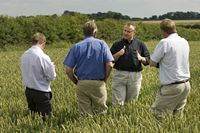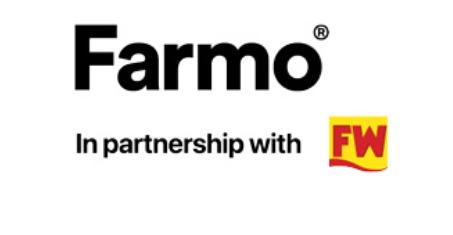Crops Arable Advisor of the Year Finalist – Sean Sparling

Sean Sparling
Independent agronomist
* Part-time magician Sean Sparling is a crop wizard. But no magic potions are used on his customers’ farms – just a lot of hard work, organisation and attention to detail.
He visits his 21 clients’ farms covering 5600ha (14,000 acres) once a week – no mean achievement in itself. But he feels that’s vital to keeping the crops he walks in tip-top shape. “Agronomists should look at crops once a week – there’s an awful lot that can change in that time.”
That’s especially true of crops such as sugar beet and potatoes. “At the key times I’ll be walking them twice a week.”
It takes strong organisation skills to keep to that schedule, and Sean is, perhaps, somewhat fortunate that his farms seem to fall very naturally into distinct blocks. But it means that he can keep his mileage under check, and create an easy routine for his farmers to get into. “They know when I’ll be on farm.”
He makes a point of building a relationship with the spray operator, as well as the farm manager or owner. “It is one of the joys of coming weekly – I can keep up-to-date about what has been sprayed.”
Spray inputs have to be justifiable at all times, he stresses. “If it can’t be justified I won’t recommend it. I must be sure that we’re getting two pounds back for every pound spent.”
But even more than that he also looks to patch spray fields to keep costs down and to make sure chemical is not used unnecessarily. “And I don’t spray weeds that are not going to cause problems.”
Product choice is a mixture of cost-effective older products, and more expensive newer chemistry where necessary. For example, blight programmes are built around old favourites Shirlan (fluazinam) and Curzate M (cymoxanil + macozeb) on seven-day intervals, but he hasn’t been afraid to include a couple of Infinito (fluopicolide + propamocarb) sprays when blight pressure warranted a more active product.
“I do move into new things but not unless I see a justification for using something which might be twice as expensive.”
Information is gathered from a number of sources, including NIAB, HGCA, plant breeders, agchem manufacturers, as well as through his membership of the Association of Independent Crop Consultants. His various memberships cost around £3000 a year. “And I’m always talking to people. I’m constantly in touch with the HGCA – I bet they get bored of me ringing up asking questions.”
But it helps him advise on everything his customers would wish for – from inputs to cultivations to variety choice and legislation. His whole range of services costs £11/ha (£4.40/acre), although that figure will likely rise next season. “I haven’t put my prices up for four years, and my costs, especially fuel, have risen,” he explains.
His prices include help with Entry Level Stewardship applications, but a specialist adviser is brought in to help if clients are interested in Higher Level schemes. Cross-compliance checks are made throughout the year. “They’re pretty straightforward – a lot of it is just common sense.”
Recommendations are either hand-written or via the Farmade computer program depending on customer need. “I’d rather write tickets by hand – it’s quicker.”
 He also advises farmers – and any other listeners – of how crops are looking on a weekly basis via a five-minute slot on Lincs FM radio every Sunday morning. “I talk about what I’m finding in fields, what I’m worrying about, and how we are going to deal with it.”
He also advises farmers – and any other listeners – of how crops are looking on a weekly basis via a five-minute slot on Lincs FM radio every Sunday morning. “I talk about what I’m finding in fields, what I’m worrying about, and how we are going to deal with it.”
It is not Sean’s only public speaking role he’s also a regular after dinner speaker, which he combines with performing close-up magic. “I’m number two in the UK,” he claims. But is he the number one arable adviser?
Catergory judges



Above: Former Arable Farmer of the Year, Mark Ireland, Independent Consultant Colin Myram, Mike Abram, Farmers Weekly’s deputy arable editor.
| What the judges liked |
|---|
|
| Adviser facts |
|---|
|

